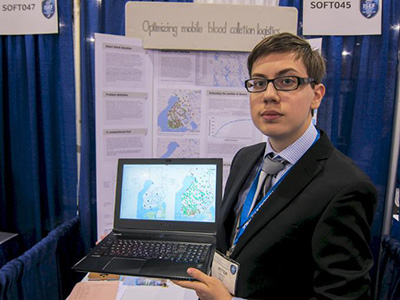Petteri Timonen, 19, came second in his category of the Intel International Science and Engineering Fair (ISEF) in Phoenix, Arizona.

On Friday, 15 May, Timonen, who is studying computer science at the University of Helsinki, was awarded a grant worth 1500 USD, some 1330 euros, in the Systems Software category of the Intel ISEF science competition.
As his entry, Timonen submitted a software tool he developed for Finland’s Red Cross to make mobile blood runs around the country as cost-effective as possible. Timonen implemented his tool in cooperation with the Blood Service.
The tool has gained international attention, as no tool like it seems to have been developed anywhere else. Timonen has also negotiated with the American Red Cross by email.
n addition to Timonen, Finland was represented at the Intel ISEF competition by Maisa Virtanen and Kaisla Kääriäinen from the Päivölä Institute, who had developed an urban ecological teaching game, and by two 9th graders from Helsinki, Emma Järvi and Ella Forsman, who had studied pre-treating stains with different detergents.
Bonus prize – a star named after you
Timonen also received a bonus prize worth more than money can measure. Along with all the first- and second-prize winners, he will have an asteroid discovered by the LINEAR programme (Lincoln Near Earth Asteroid Research) at Massachusetts Institute of Technology (MIT) named after him. Asteroids that might collide with earth and cause damage will not be named after the young winners.
Succeeding internationally via national competition
Timonen entered his work in the Finnish Tutki-Kokeile-Kehitä competition in spring 2015 and won the category for high school students. Based on that, he was selected to represent Finland in the EU Young Scientists in Milan. There he was awarded the Intel ISEF special prize, which was the trip to the science fair in Arizona.
The Tutki-Kokeile-Kehitä competition is organised by Development Centre Opinkirjo and Academic Engineers and Architects in Finland TEK. The number of participants has been growing steadily during the past years. The annual Intel ISEF event is the largest international science and technology competition for upper-secondary students. The six-day fair attracted over 1700 young scientists from 77 different countries. The projects of the finalists were assessed on-site by around one thousand judges representing different fields of science.

